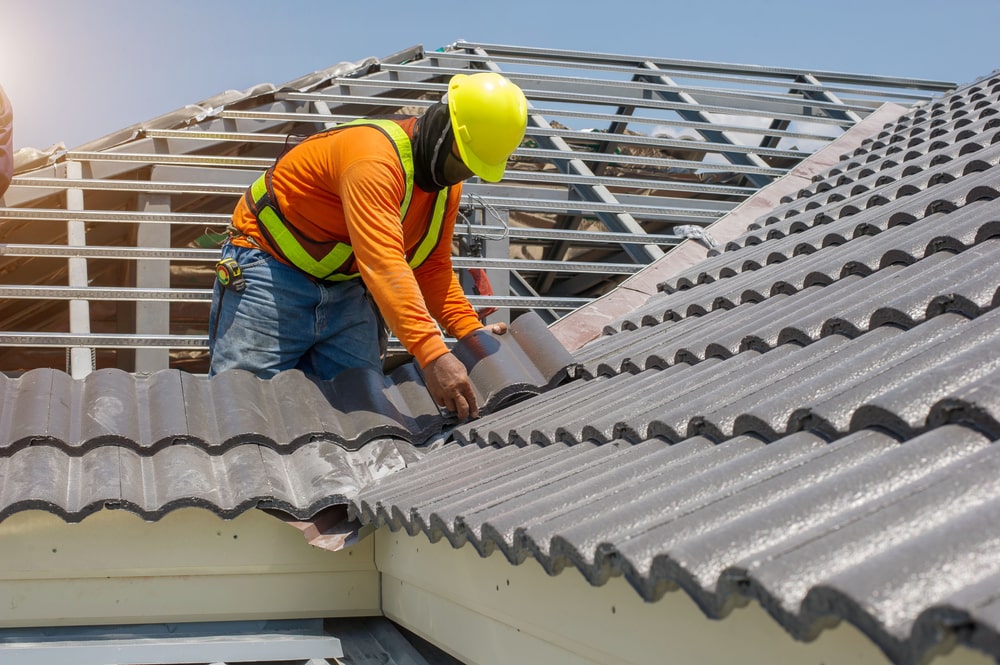Contrasting Prices Among Roofing Companies in Gainesville Florida
Wiki Article
Best Practices for Ensuring Appropriate Roofing Ventilation
A balanced intake and exhaust air vent proportion, commonly 1:300, plays a pivotal function, with consumption vents preferably put at the lower edge of the roof covering for trendy air entry and exhaust vents at the top for warm air departure. Maintaining insulation away from vents is vital to prevent airflow restriction.Understand Ventilation Fundamentals
Effectively comprehending ventilation essentials is necessary for ensuring the longevity and performance of roofing systems. Reliable ventilation mitigates moisture accumulation and temperature level extremes in the attic, both of which can cause substantial architectural damages gradually. A well-ventilated roofing system helps in stopping typical issues such as mold growth, timber rot, and ice dams, which can jeopardize the stability of the roofing products and the underlying frameworks.The key objective of ventilation is to assist in the movement of air, permitting for a regular exchange in between the outdoor and indoor settings. This equilibrium is achieved with a combination of intake and exhaust vents that function with each other to preserve optimum air flow. Intake vents, usually situated along the eaves or soffits, permit fresh air to go into the attic area, while exhaust vents, commonly positioned at or near the roofing ridge, enable warm, moist air to run away.
Trick variables influencing the effectiveness of roof covering ventilation include proper placement, ample sizing, and ensuring that both intake and exhaust vents are unhampered. Normal examination and upkeep are vital to determine potential obstructions, damages, or inefficiencies in the ventilation system, consequently safeguarding the roofing's performance and sturdiness.
Types of Roof Covering Vents
Roof covering vents play an essential duty in maintaining reliable attic room ventilation and, by extension, the overall wellness of the roof. Numerous sorts of roofing system vents are available, each with unique benefits tailored to certain roofing demands. Ridge vents, as an example, are mounted along the roofing system's peak, permitting cozy, moist air to run away from the attic. They supply continuous ventilation and blend perfectly with the roofline, making them both reliable and aesthetically pleasing.
Soffit vents are set up under the eaves and work in tandem with roofing vents to guarantee a balanced consumption and exhaust system. By allowing cooler air to go into from below, soffit vents facilitate the expulsion of warm air with upper vents. Gable vents, located on the exterior wall surfaces of the attic room, deal another effective service, particularly in homes with gable roofs.
Analyze Your Existing Ventilation

Following, consider the age and problem of your roof covering materials and air flow parts. Older systems may not follow present building ordinance or might visite site have degraded with time, minimizing their performance. Conduct a comprehensive examination to recognize any type of indicators of damage, such as rust, damages, or gaps that can jeopardize the system's efficiency.
Additionally, measure the attic temperature and moisture levels. High temperatures and humidity can show inadequate ventilation.
Installation Best Practices
Reliable installation of roof covering ventilation systems is vital for making certain optimal performance and durability. Appropriate installment starts with understanding the certain air flow needs of the roofing and the structure it view it covers. This involves determining the right ratio of intake to tire vents, commonly adhering to the 1:300 policy, which states one square foot of ventilation for every single 300 square feet of attic room flooring room.
Intake vents must be set up at the roof's reduced side, often in the soffits, to permit awesome air to get in. Exhaust vents, on the other hand, should be mounted near or at the roofing system's top to facilitate the departure of cozy, damp air.
Seal all vent connections carefully to avoid air leaks and prospective water infiltration. Use top notch materials and follow producer standards to make sure resilience and effectiveness. Furthermore, integrating ridge vents with baffles can considerably boost air movement efficiency by avoiding wind-driven rainfall and snow from getting in the attic room.
Eventually, specific setup of roofing air flow systems minimizes potential issues such as mold and mildew growth, ice dams, and structural damage, making sure the roof covering's honesty and the building's total wellness.
Normal Maintenance Tips
Consistency in maintenance methods is essential to guaranteeing the long-lasting effectiveness of roofing ventilation systems. During these inspections, ensure that vents are totally free of particles, nests, and various other obstructions that might restrain airflow.
Use a soft brush or a vacuum to eliminate dirt and particles from intake and exhaust vents. Be mindful not to harm the air vent displays or louvers during the process.
Proper insulation is similarly vital. Ensure that attic room insulation does not obstruct the vents, as this can badly restrict air flow. If any type of insulation has shifted or worked out, rearrange or change it to maintain an effective barrier.
Last but not least, change any damaged or missing elements immediately. Broken vents, broken roof shingles, or tatty flashing can all add to insufficient air flow and needs to be attended to right away. Regular maintenance makes sure that the roof covering ventilation system works optimally, thus extending the lifespan of my website the roof covering itself.
Conclusion
Guaranteeing proper roofing air flow is vital for maintaining the performance and resilience of a roof system. Adherence to the 1:300 consumption and exhaust air vent ratio, coupled with the strategic placement of vents, is essential.A balanced intake and exhaust air vent ratio, frequently 1:300, plays a pivotal role, with consumption vents ideally placed at the reduced edge of the roof for amazing air access and exhaust vents at the height for cozy air departure. Consumption vents, generally situated along the eaves or soffits, allow fresh air to enter the attic room room, while exhaust vents, commonly positioned at or near the roofing ridge, make it possible for warm, damp air to leave.
Soffit vents are set up under the eaves and job in tandem with roof covering vents to make sure a balanced intake and exhaust system. By enabling cooler air to get in from below, soffit vents assist in the expulsion of warm air with top vents. Adherence to the 1:300 consumption and exhaust air vent proportion, coupled with the strategic placement of vents, is crucial.
Report this wiki page